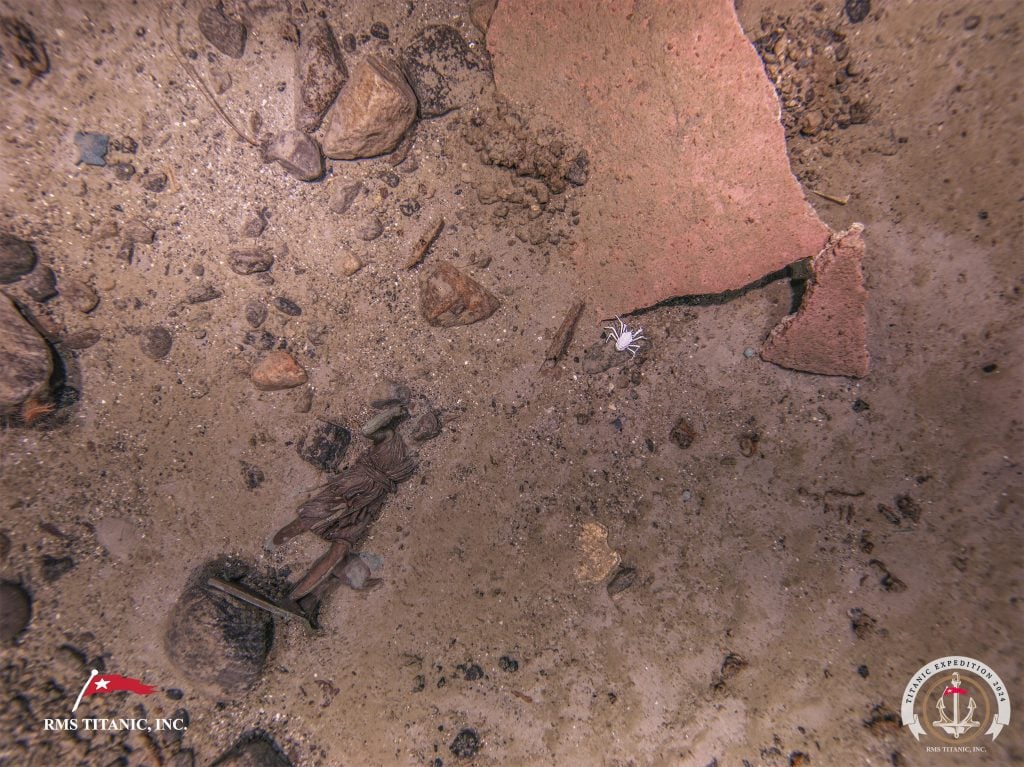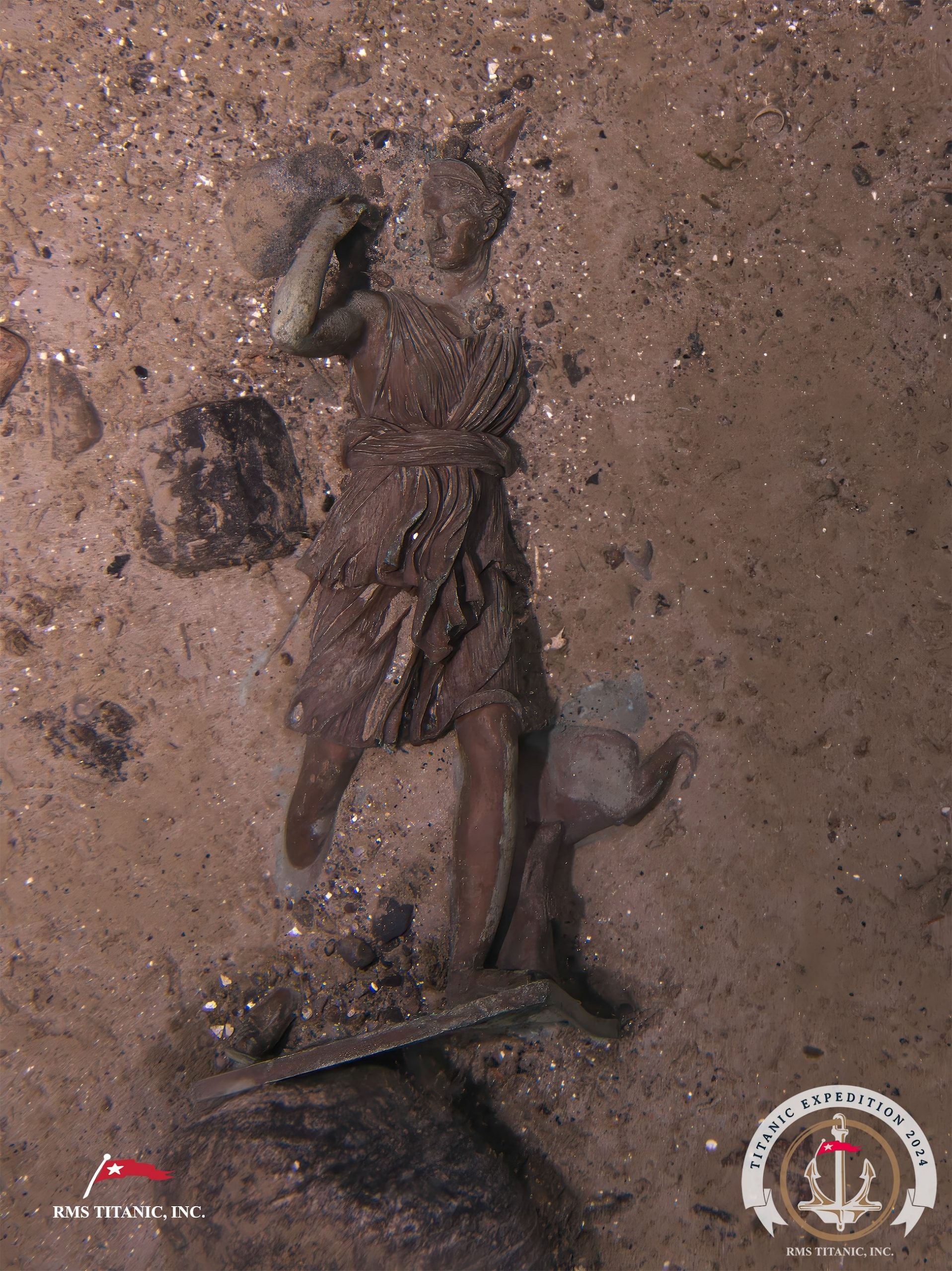When it took to the sea in 1912, the RMS Titanic was not only a luxury liner transporting society’s upper crust from England to the U.S.; it could also be described as a floating gallery of fine art and design, populated with high-end objects from a Renault Coupe de Ville to irreplaceable books and a 1912 painting by Merry-Joseph Blondel that would be worth over $3 million dollars today.
Now, an unmanned mission to the floor of the North Atlantic Ocean where the ship lies has revealed a long-sought two-foot-tall bronze statue showing the goddess Diana that stood atop the fireplace mantel in the first class lounge. Based on an original in the Louvre’s collection, the sculpture is often referred to as the Diana of Versailles.
RMS Titanic, the Georgia company that explores and preserves artifacts from the ship, recently made its first unmanned dive to the site in 14 years, taking more than two million photos over its monthlong expedition, with an eye to possible future recovery missions.
The so-called “Diana of Versailles” in situ on the Titanic. Photo: João Gonçalves, courtesy RMS Titanic.
Top priority, according to James Penca, a researcher with the company, was the Diana sculpture, but finding her was a tall order.
“It’s truly a needle in a haystack that is two-and-a-half miles underwater in pitch black darkness,” Penca told National Public Radio, adding that “we found her with just hours remaining in the expedition.”
“There were a lot of tears in the room for a lot of us,” said Penca, “even the people who’ve been there before.”
Since technology has progressed so dramatically since the last expedition, Penca explained, the company was able to take much higher-resolution photos this time around.

The two-foot-tall bronze sculpture of Diana, found among the wreckage of the Titanic. Courtesy RMS Titanic.
At the same time, the photographs revealed that the bow railing on the front of the ship, site of an iconic scene between Leonardo DiCaprio and Kate Winslet in James Cameron’s blockbuster film Titanic, has collapsed since 2022.
“The discovery of the statue of Diana was an exciting moment,” said Tomasina Ray, director of collections for RMS Titanic. “But we are saddened by the loss of the iconic Bow railing and other evidence of decay which has only strengthened our commitment to preserving Titanic’s legacy.”
Follow Artnet News on Facebook:
